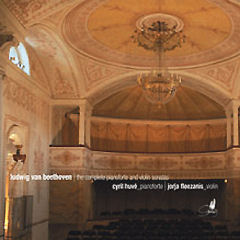Producer Comments
Ambience of this recording consists largely of reverb generated by Pure Space classical IR1425.
Review from Stringmagazine.com
Jorja Fleezanis, longtime concertmaster of the Minnesota Orchestra, is a splendid violinist, possessor of a masterful technique and a pure, variable, beautiful, expressive tone. These two recordings admirably illustrate her extraordinarily stylistic versatility and communicative power. In John Tavener's new work Ikon of Eros, written for Fleezanis, the violin represents Divine Eros; playing almost continuously, her tone has an uninflected, celestial purity, floating high above orchestra and chorus. The four-part piece is contemplative, mostly static, except for an oriental-sounding dance. Variety is created through dynamics and contrasting choral and instrumental textures. The style is based on Eastern orthodox liturgy. The soprano sings in unison with the violin, the baritone acts as cantor. In an interview, Tavener describes music as "liquid metaphysics;" learning beauty from "virgin nature," it heals, moves, fills with wonder, expresses a longing for God. He considers all religions sublime, "none remains exclusive." That belief is reflected here.
The Beethoven Sonatas are technically and stylistically impeccable. Both players make their meticulous observance of Beethoven's markings sound musically and emotionally natural. The most startling element is the pianoforte sound: dry, crisp, transparent, with a brittle, rattling quality, especially since Beethoven indicates pedal only in the last two sonatas. Fleezanis plays the early sonatas in a semiperiod style, with delayed, sparing vibrato, swells, and abruptly short notes, though her tone is unfailingly beautiful. Some fast tempos are breathlessly hectic, but most are well suited to the mood, character, and expression of the music, allowing for elegant phrasing, poised changes, and transitions within a flexible but rock-steady rhythm. Among the highlights are the two perhaps most elusive sonatas, Nos. 6 and 10, but listeners will find their own favorites.
- Edith Eisler, stringmagazine.com
The Beethoven Sonatas are technically and stylistically impeccable. Both players make their meticulous observance of Beethoven's markings sound musically and emotionally natural. The most startling element is the pianoforte sound: dry, crisp, transparent, with a brittle, rattling quality, especially since Beethoven indicates pedal only in the last two sonatas. Fleezanis plays the early sonatas in a semiperiod style, with delayed, sparing vibrato, swells, and abruptly short notes, though her tone is unfailingly beautiful. Some fast tempos are breathlessly hectic, but most are well suited to the mood, character, and expression of the music, allowing for elegant phrasing, poised changes, and transitions within a flexible but rock-steady rhythm. Among the highlights are the two perhaps most elusive sonatas, Nos. 6 and 10, but listeners will find their own favorites.
- Edith Eisler, stringmagazine.com
About Jorja Fleezanis
Jorja Fleezanis has been concertmaster of the Minnesota Orchestra since September 1989, assuming that position after nine years with the San Francisco Symphony, eight of them as associate concertmaster. In November 2003, Fleezanis was soloist with the Orchestra under Osmo Vänskä in the John Adams Violin Concerto, a work commissioned and written for her in 1993. She has given first performances of several other important violin works, including Nicholas Maw’s Sonata for Solo Violin and, with violist Thomas Turner, the American premiere of Benjamin Britten’ s Double Concerto for Violin and Viola. A master teacher, she serves on the faculty of the University of Minnesota and is artist-in-residence at the University of California-Davis. She maintains a long-time relationship with the Round Top (Texas) International Festival. Fleezanis plays a Matteo Goffriller violin, made in 1700 and given in 2003 to the Minnesota Orchestra for her use by John and Nancy Lindahl.


 RSS Feed
RSS Feed